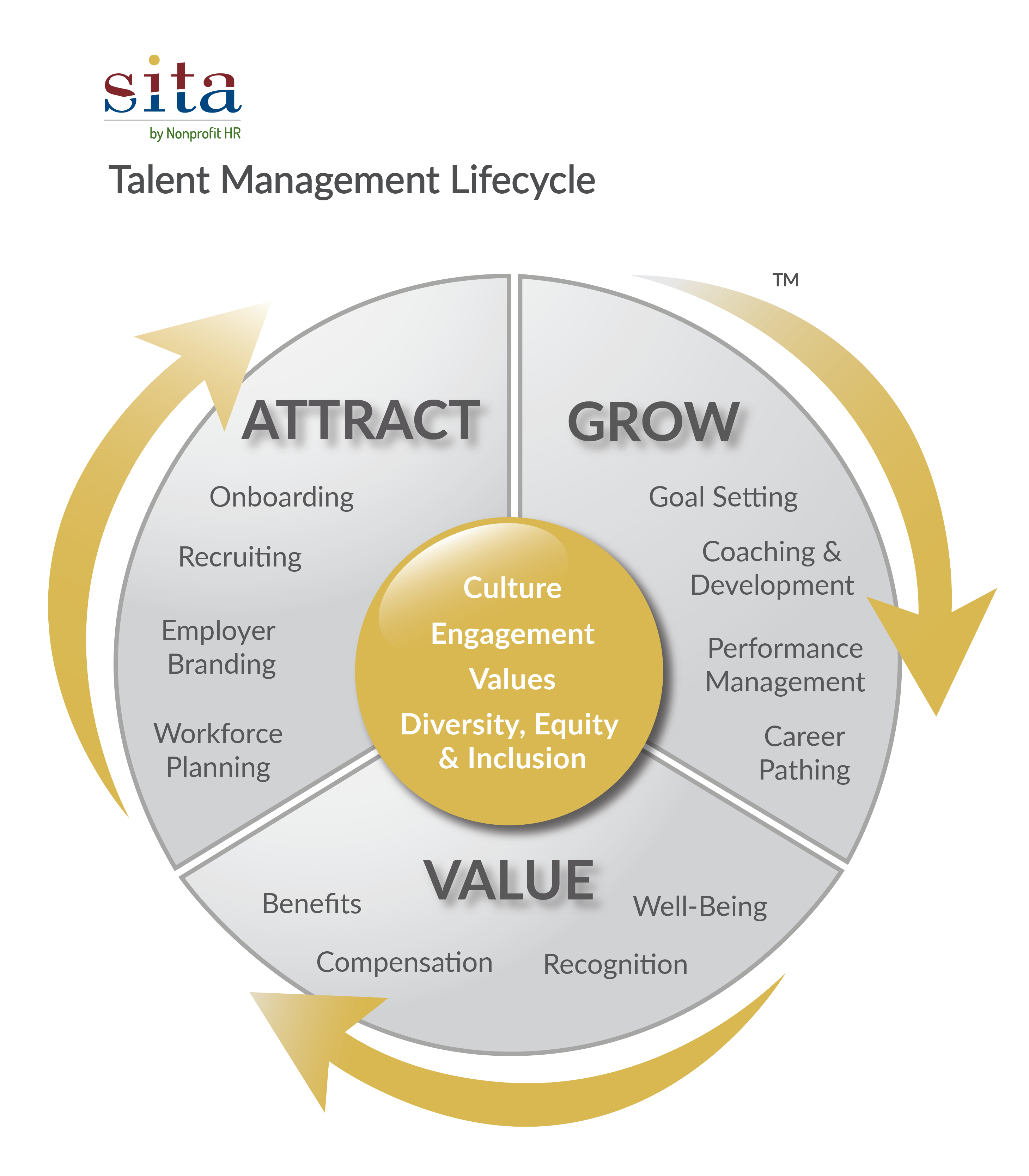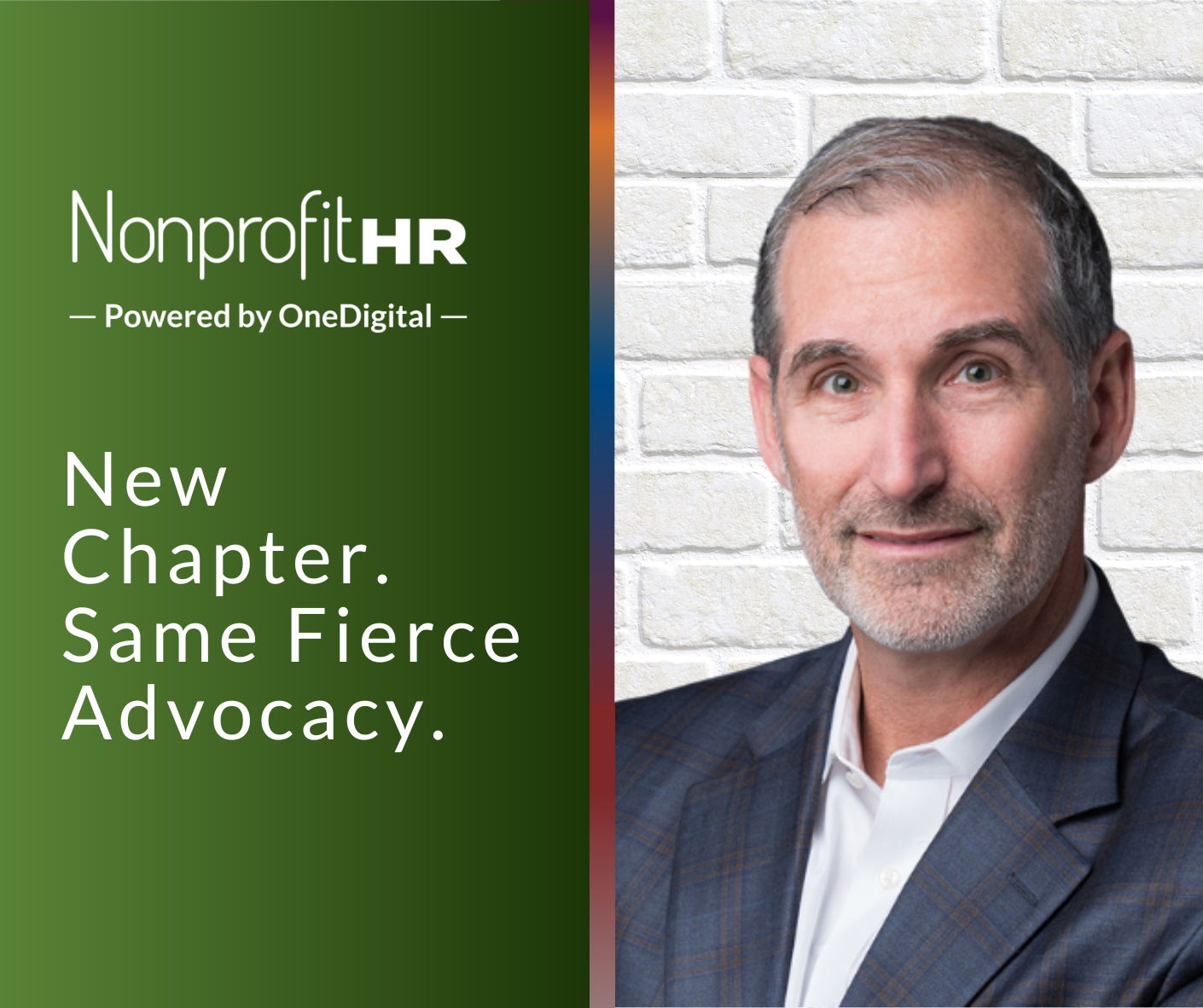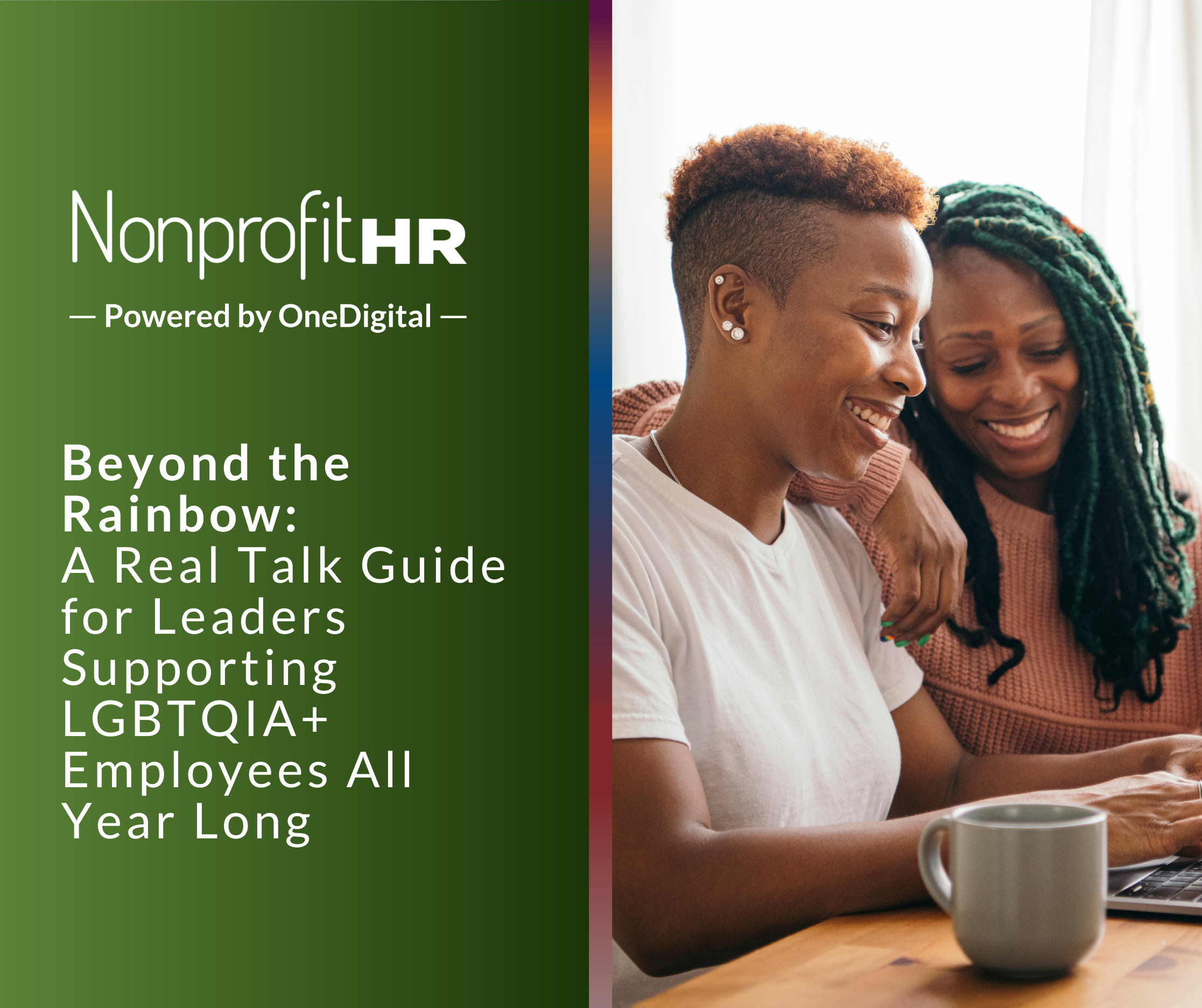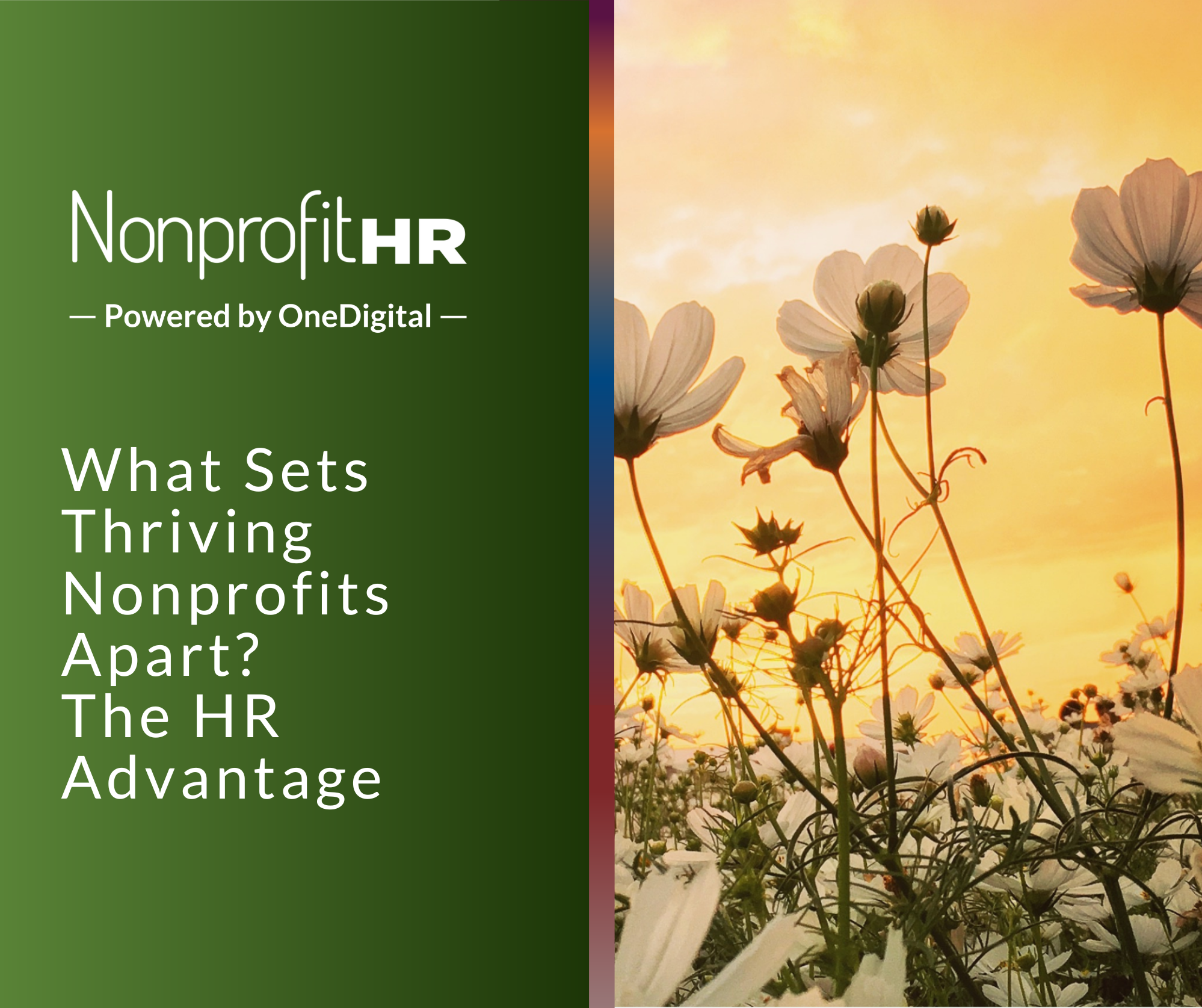WTOP: 5 ways nonprofits can…
In communities across the globe, social entrepreneurs are challenging the status quo. Are you among this group? At Nonprofit HR, we know that your social enterprise’s mission adds a rich layer to the global economy, and at the heart of your operations is your people. The social enterprise ecosystem is a vibrant example of just how impactful an investment in people can be. Your organization’s success in this emerging fourth sector will prove that when leaders are dedicated to their people—to their growth, development and fulfillment—their return on that investment is greater mission impact.
If you have been wondering how your people’s potential actualizes, consider that it can look different depending on your social enterprise’s current growth phase. The goal is to find people who will be able to challenge themselves to transition with and grow through your organization’s growth phases, ignited by their passion for your mission. Why? Because passion and potential, when maximized, translate to organizational results. Whether your social enterprise is a start-up, growth creator or established enterprise, it is important to ask yourself as a leader if you have laid the structural and cultural groundwork within your organization to maximize the potential of your current and future people.
Taking Action to Promote Potential
Cultivating a deep understanding of the people who choose to invest their time, skills and passion in your mission must begin with your talent management strategy. This focus is first visible within the attraction stage of the talent management lifecycle. Laying this kind of foundation from the start ensures the establishment of a shared investment in mission.
So what does a deep understanding of people look like? We’ve broken down five actions social enterprises take through the various stages of the talent management lifecycle that set them up to genuinely and effectively serve their people.
Focus on Lived Experiences: Social enterprises often attract people who have lived the mission and that subjective experience aligns with every aspect of their work. When you focus on your candidates’ lived experiences, you give voice to diverse perspectives that shape your organization. Prioritize and celebrate those lived experiences first, and any other qualifications or education they may have second. This will lead you to a very different and important place: authenticity.
Remain Authentic: Organizational authenticity is achieved when values align with action. Creating and maintaining authenticity as an organization requires that your people, who also champion your values, are able to show up authentically as well. Thus, as a leader, it is essential to actively seek that authenticity and applaud it within your culture because it will then reverberate throughout the lifespan of the organization.
Promote Collaboration: One truth to many social enterprises is that there are no hard hierarchical lines. Little prevents an associate-level professional from reaching out to the senior vice president; everyone is accessible to each other in the organization. In addition, the power of the individual in the workplace is growing. This means that more and more, employees that social enterprises attract feel empowered to express, influence and manage their personal workplace experiences. In this way, their staff members seek opportunities to contribute to the creation of an environment that facilitates the realization of not only their own capabilities, but also the capabilities of their colleagues.
Look For Mission Loyalty: It’s about hiring those who not only are driven by your specific mission, but also have that “change the world” mentality. Finding people who approach life with this mentality and live it out on a daily basis, no matter what level they are in the organization, is the aim. To put it simply, you are hiring for like-mindedness—not solely for a skill set. Start by working to identify this in the recruitment stage by asking candidates clear-cut questions such as, “What motivates you?” or “How does your personal mission statement align with our organization’s mission statement?” Once you do, the cultivation of loyalty and the likelihood of increased organizational commitment will follow.
Expect and Encourage Replication: Dynamic leaders understand that high-performing people may dream of running their own social enterprises. That is also what a deep commitment to mission is all about: social replication. Ask yourself how you can replicate your vision so much through the organization that it eventually becomes a global force carried out by the people who were initially moved by your mission. Doing so will further increase the impact of your mission, advance social innovation, expand the network of communities served and support the social enterprise ecosystem as a whole.
Maintaining your people as a focal point as they grow and develop with your organization is essential to understand the suitable strategies through which you will be able to further your mission. This is why the people management priorities your organization champions during attraction and recruitment are enhanced when they are carried throughout the lifecycle. In action, this can show up in your organization as mentoring, coaching and leadership development.
Measuring Potential, Internally and Externally
As your social enterprise scales and evolves, there are two indicators—one internal and one external, both people-based—that help you determine whether your people’s potential is being maximized.
First, look internally: Are your people loyal to your mission? Uplifting the shared feelings of importance and connectedness among your people is the secret sauce of mission loyalty within social enterprises. No doubt, pursuing your organization’s mission is hard work, and taking a look at the level of commitment and devotion of your workforce can give you a good idea as to whether you and your staff are well-aligned and moving in the right direction.
Second, look externally: How are the communities in which you operate shifting or changing? Social entrepreneurs understand that their success extends beyond revenues and profits and that valuing the relationships within your organization’s ecosystem also matters. In essence, measuring the impact on the people that you serve and continuing to meet whatever unmet needs arise confirm your organization’s purpose, and your investment in the right people is crucial to sustaining it.
The fourth sector was created for a reason—there simply are societal needs that exceed public, private and traditional nonprofit resources and capabilities. Just as business leaders of those sectors have built organizations that thrive, so too can you with your social enterprise, and you can increase the likelihood of this happening by staying responsive to and cultivating a deep understanding of your people.
Contributing Author
 |
|
|
Patricia “Patty” Hampton, CSC, MCPC
Chief Social Impact Officer & Managing Partner
|






























